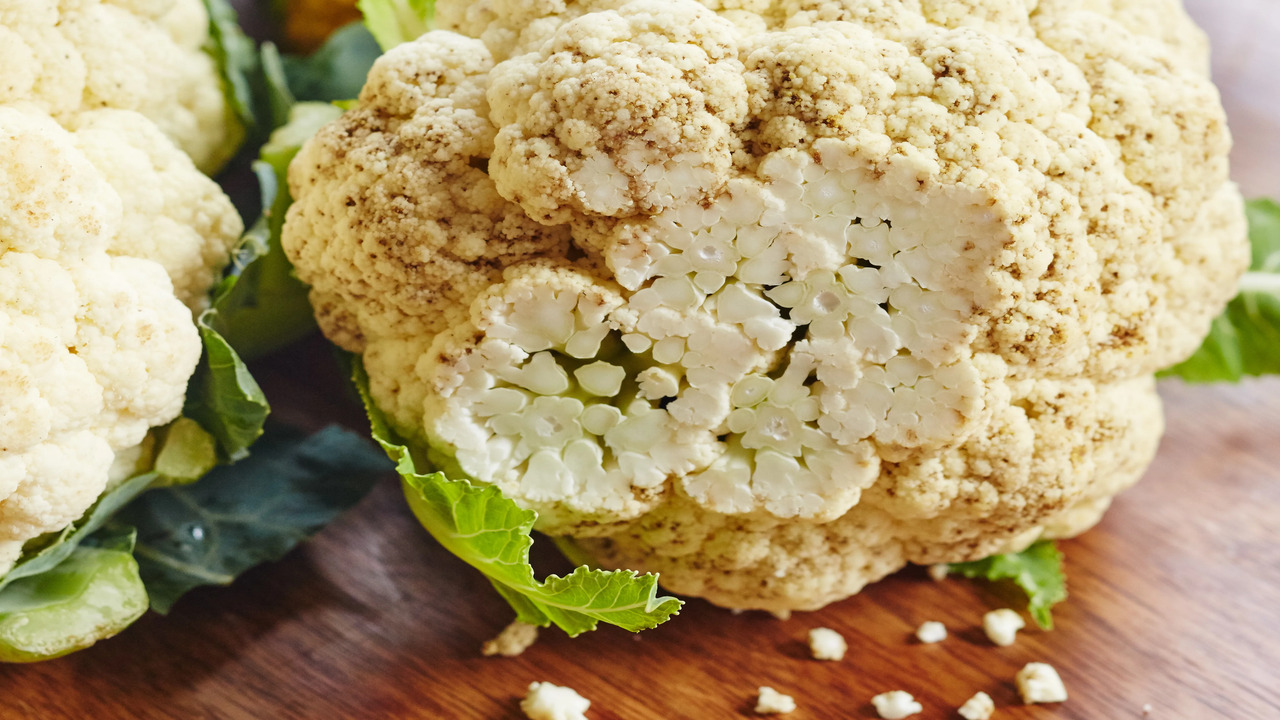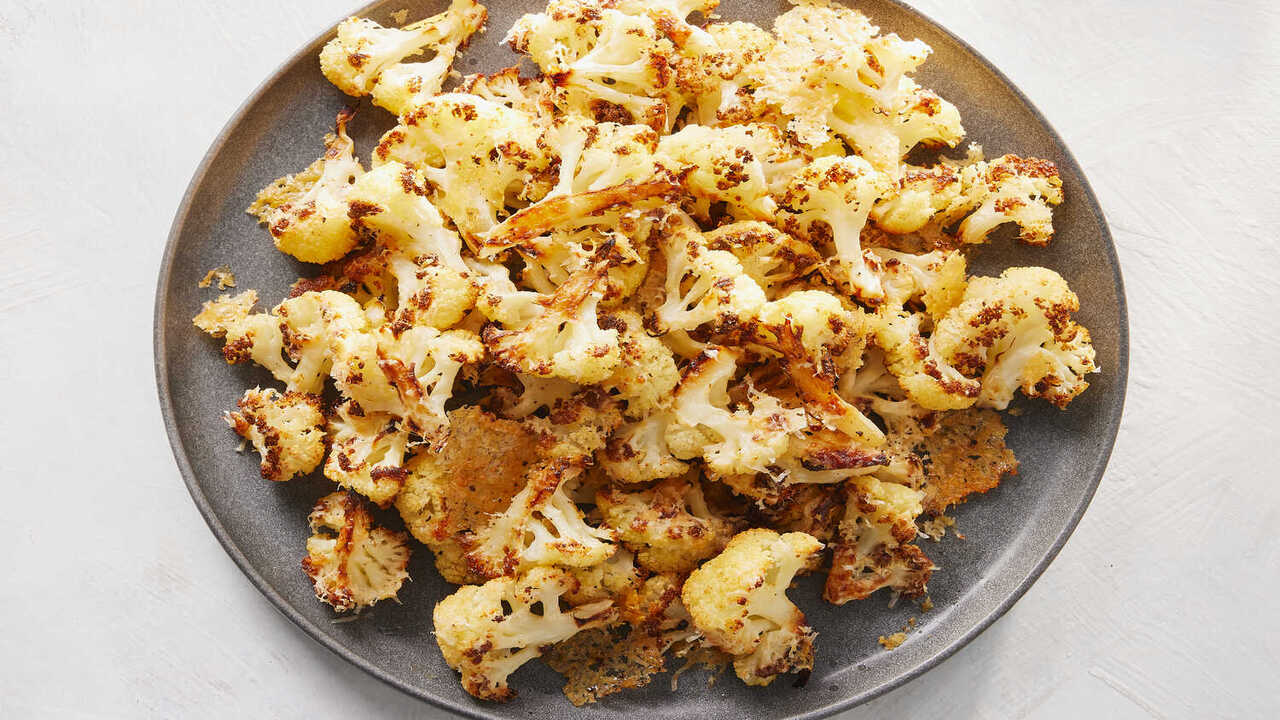Cauliflower has become a staple in many households and a popular substitute for carbs in many dishes. However, one of the biggest challenges when cooking cauliflower is browning.
Cauliflower happens when the vegetable becomes discolored due to high heat exposure or a chemical reaction. While it may not affect the dish’s taste, it can certainly impact the presentation. No one wants to serve a dish that looks unappetizing.
The good news is that cauliflower browning can be avoided and fixed with simple techniques. We will explore the reasons behind cauliflower browning and provide tips on how to avoid it. We will also discuss how to fix browning if it has already occurred.

Unveiling The Causes Behind Cauliflower Browning

Cauliflower browning can be a frustrating issue for many home cooks and chefs. This discoloration has several potential causes, ranging from slight browning to more severe blackening. One common cause is enzymatic browning, which occurs when the cauliflower is cut or bruised and releases enzymes that react with oxygen in the air. This reaction leads to the development of brown pigments.
Another possible cause is oxidation, which happens when the cauliflower is exposed to air for an extended period of time. Finally, overcooking can also lead to browning as heat breaks down the cell walls and causes the cauliflower to release sugars that caramelize and turn brown. To prevent cauliflowers’ browning, store it properly in airtight containers or plastic bags, minimizing cutting or bruising before use and cooking it until tender rather than overcooking it.
Role Of Oxidation In Cauliflower Browning

Oxidation, a natural process, is responsible for the browning of cauliflower. When cauliflower is exposed to air, the enzyme polyphenol oxidase initiates the oxidation reaction, resulting in brown spots and discoloration on the florets.
Anti-browning agents like lemon juice or vinegar can be handy to minimize browning. Additionally, proper storage in an airtight container and blanching before freezing can help prevent oxidation and retain the cauliflower’s original color and nutritional value.
Influence Of Mold On Cauliflower Discoloration
Mold growth on cauliflower can result in unsightly browning and discoloration of the florets. It is important to control moisture levels and ensure proper storage to prevent mold development. High humidity and warm temperatures create favorable conditions for mold growth, so proper ventilation and air circulation in storage areas are essential. Regular inspection and removal of moldy cauliflower can help prevent the spread of mold and further discoloration.
How Does Browning Affect The Edibility Of Cauliflower?

Browning can significantly impact the taste and texture of cauliflower, making it less appetizing. It can lead to a bitter or unpleasant flavor and cause the cauliflower to become mushy or overly soft. To prevent browning, it is recommended to blanch the cauliflower before cooking, which involves briefly immersing it in boiling water and then immediately transferring it to ice water.
Another option is to add lemon juice, as its acidity helps preserve the natural color of the cauliflower. By taking these steps, you can ensure that your cauliflower remains fresh, vibrant, and delicious when prepared for meals.
Differentiating Between Natural And Harmful Browning In Cauliflower
Natural browning in cauliflower occurs when the vegetable is cut or bruised due to enzymatic reactions. In contrast, harmful browning can result from microbial contamination or pathogens. Acidic ingredients like lemon juice or vinegar can be handy to prevent natural browning.
On the other hand, proper food safety measures, such as thorough washing and cooking at the right temperature, are necessary to prevent harmful browning. Being able to differentiate between natural and harmful browning ensures food safety and preserves the quality of cauliflower dishes.
Methods To Prevent The Browning Of Cauliflower
Blanching is a technique handy to preserve the freshness and appearance of cauliflower by immersing it in boiling water. This process inhibits enzyme activity and slows down the browning that can occur when cauliflower is exposed to air. Another method to prevent browning is soaking the cauliflower in acidic solutions like lemon juice or vinegar, as the acidity helps to maintain its color.
Refrigerating cauliflower at temperatures between 32-36°F can also slow down enzymatic browning, while vacuum sealing removes air and slows down oxidation. Additionally, applying antioxidant treatments or coatings can further inhibit browning in cauliflower, ensuring it retains its visual appeal for longer periods of time.
The Impact Of Cutting Tools On Cauliflower Browning

Regarding cauliflower browning, the cutting tool used can make a significant difference. Sharp knives are ideal as they minimize cell damage, reducing the risk of browning. To prevent oxidation, experts recommend using stainless steel knives to cut cauliflower.
On the other hand, carbon steel knives should be avoided as they can accelerate browning due to a reaction with cauliflower enzymes. It’s also essential to clean cutting tools thoroughly between uses to prevent cross-contamination and further browning.
How Does Cooking Technique Influence Cauliflower Browning?
The cooking technique used can greatly impact the browning of cauliflower. When roasted at high temperatures, the cauliflower undergoes caramelization, resulting in a beautiful golden brown color. On the other hand, steaming or boiling cauliflower doesn’t produce the same level of browning.
Sautéing cauliflower may result in unevenly distributed browning, as certain areas may brown more than others. Therefore, if you’re looking for that perfect golden brown color and delicious caramelized flavor, roasting is the best cooking method for cauliflower.
Can Change The Ph Level Of Water Help In Preventing Cauliflower Browning?
Preventing cauliflower browning can be challenging, but some believe that changing the pH level of water can help. Polyphenol oxidase, an enzyme, causes browning in cauliflower by reacting with oxygen in the air to produce a brown pigment. By altering the pH level of water, it is thought that the activity of this enzyme can be reduced, thereby preventing browning.
However, further research is needed to determine the effectiveness of this method and whether it can be reliably used on a larger scale. In the meantime, other techniques, such as blanching or adding lemon juice to the water, can also help to prevent cauliflower browning.
How To Handle And Serve Browned Cauliflower?

When cauliflower starts to brown, it can be disappointing, but fear not! There are still ways to salvage and serve browned cauliflower. One option is to trim off the browned parts and use the remaining white or lightly colored florets. This can work well if the browning is minimal. Another option is to roast or sauté the browned cauliflower, which can help bring out its natural flavors and make it more appetizing.
You can also try incorporating the browned cauliflower into dishes where its appearance, such as soups or stews, won’t matter as much. Regardless of how you handle and serve browned cauliflower, remember that it is still perfectly safe to eat and can still be delicious with a little creativity in the kitchen.
Conclusion
Understanding the causes of cauliflower browning is essential for preserving its quality and appearance. Oxidation and mold are two primary factors that contribute to discoloration. While browning does not necessarily make cauliflower inedible, it can affect its taste and texture.
Differentiating between natural and harmful browning is crucial to determine if cauliflower is safe to consume. Implementing proper storage techniques and using the right cutting tools can help prevent browning.
Additionally, cooking methods like steaming or roasting can influence the extent of browning. Altering the pH level of water may also help in preventing cauliflower browning. By following these tips, you can handle and serve cauliflower without the unsightly effects of browning, ensuring a visually appealing and delicious vegetable dish.
Frequently Asked Questions
[rank_math_rich_snippet id=”s-8459e99f-2a35-4658-ae8e-d91edf1f2198″]

I am passionate about home engineering. I specialize in designing, installing, and maintaining heating, ventilation, and air conditioning systems. My goal is to help people stay comfortable in their homes all year long.








